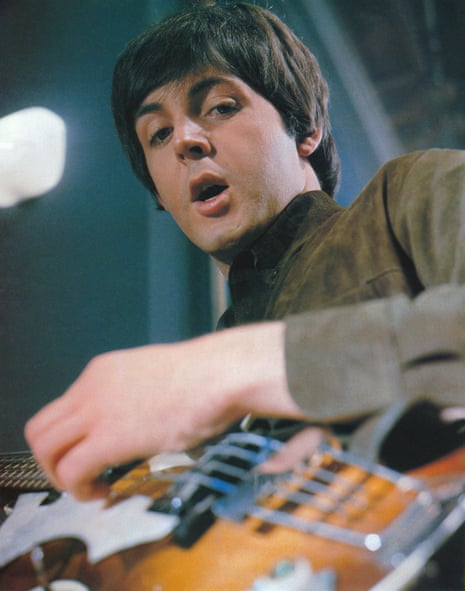On 4 December 1965, the Beatles appeared at Newcastle-on-Tyne’s City Hall during what would be their last ever British tour. I was a 22-year-old reporter in the Newcastle office of the Northern Echo. Orders from my newsdesk were: “Go along and try to get a word with them.”
I set out on the assignment with zero hope. This tour came in the wake of their Rubber Soul album, their second smash-hit film Help!, their performance to 55,000 people at New York’s Shea Stadium and their investiture as MBEs by the Queen. I’d be competing not only with Tyneside’s own heavyweight media but also the national newspapers and broadcasters who had offices there. Even if I got close to them, why would they waste a second on some nobody from the Northern Echo?
A few minutes before showtime, I was loitering backstage among a crowd of other would-be interviewers, including my friend Dave Watts from the Echo’s evening stablemate, the Northern Despatch. In those more innocent days, the Beatles’ dressing room was without any security protection, yet no one dared knock on the door, let alone barge in.
Then suddenly Paul McCartney came along the passage. As he opened the dressing-room door, Dave said: “I know that face” and, as he paused with a grin, I managed to ask: “Can we come in and talk to you?”
“Sure,” he replied. So, scarcely believing our luck, we followed him.
Despite the endless floods of journalists the Beatles had to endure, they were astonishingly friendly and obliging. I started talking to Ringo, who was sitting in an armchair, then John, perched on one arm, joined in. On a nearby sofa lay the Hofner “violin” bass that had become Paul’s particular trademark. I asked him if it was heavy to wear onstage.
“No, it’s light,” he said. “Here… try it.” With that, he picked the bass up and tossed it over to me. For a few moments I found myself thumbing the same steel-wound strings that Paul McCartney did. I asked whether violin-shaped basses were more expensive than regular ones. “Only 52 guineas,” he said. “I’m a skinflint, you see.”
Just then, a hollow-cheeked man in a yellow shirt entered the room and noticed me. This was their roadie, Neil Aspinall, one of whose main functions on the road was saying to journalists what the lovely, cuddly Fab Four couldn’t possibly say themselves… “You,” he said with a jerk of his thumb. “Out!”
As I made my ignominious exit, I consoled myself that at least I had a Beatles angle none of my rivals did: how Paul let me play his bass and told me he was a skinflint.
Paul McCartney: The Biography by Philip Norman is published by Weidenfeld & Nicolson at £25. To order a copy for £20, go to bookshop.theguardian.com

Comments (…)
Sign in or create your Guardian account to join the discussion